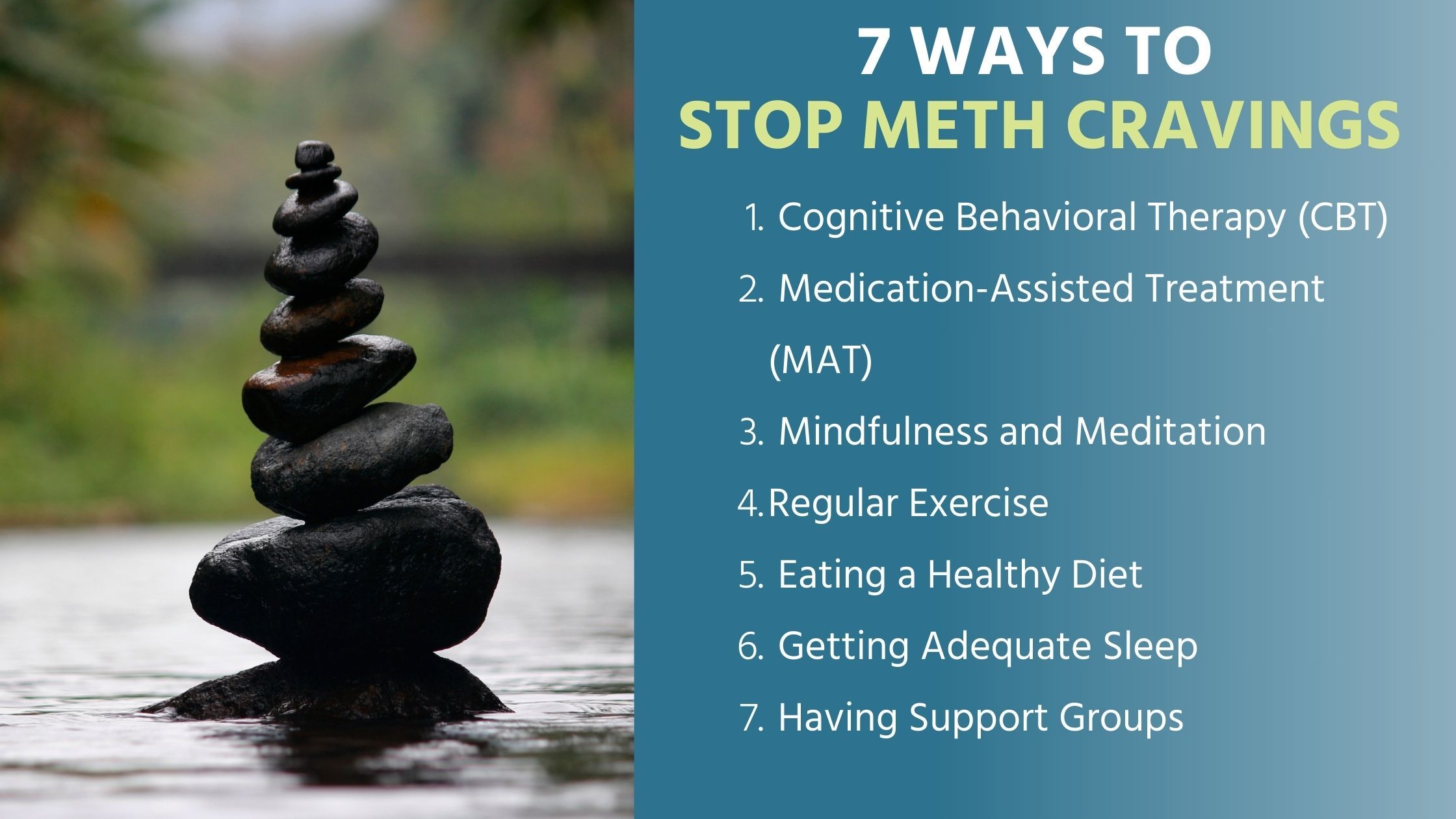In the struggle against meth addiction, one of the most challenging aspects is dealing with cravings. The intense desire to use can be overwhelming and, if not managed properly, can lead to relapse. This makes understanding and addressing meth...
In the struggle against meth addiction, one of the most challenging aspects is dealing with cravings. The intense desire to use can be overwhelming and, if not managed properly, can lead to relapse. This makes understanding and addressing meth cravings a critical part of the recovery process.
In this article, we will explore practical strategies and methods that can help you maintain their sobriety and effectively manage these cravings. These strategies are not just theoretical; they are based on scientific research and have been proven effective in real-world situations.
Whether youíre in recovery yourself, or supporting a loved one through their journey, these tips could make a significant difference. Remember, overcoming addiction is not a matter of willpower aloneóitís about equipping yourself with the right tools and strategies to succeed. Letís dive in and discover these 7 ways to stop meth cravings.
Understanding Meth Cravings
Methamphetamine, commonly known as meth, is a powerful stimulant that can cause intense cravings due to its impact on the brainís reward system. When a person uses meth, it floods the brain with dopamine, a neurotransmitter responsible for feelings of pleasure and reward. This creates a euphoric high that the brain remembers and seeks to replicate, leading to cravings.
However, over time, repeated meth use can damage the brainís dopamine system. It reduces the brainís ability to naturally produce dopamine and increases the brainís tolerance to the drug, which means the person needs to take more of the drug to achieve the same high. This cycle can lead to addiction.
Understanding this process is crucial in managing meth cravings and addiction. Recognizing that cravings are a result of changes in the brain, rather than a failure of willpower, can help you approach their recovery with self-compassion and determination.
Ways To Stop Meth Cravings
 1. Cognitive Behavioral Therapy (CBT)
1. Cognitive Behavioral Therapy (CBT)
Cognitive Behavioral Therapy (CBT) is a structured, goal-oriented type of talk therapy that helps manage mental health conditions, including addiction. It focuses on identifying and changing thought patterns that contribute to harmful behaviors.
In the context of meth addiction, CBT can be particularly effective. It teaches coping skills and strategies to deal with cravings. By understanding and altering the thoughts and emotions associated with meth use, individuals can learn to resist cravings and maintain sobriety.
CBT provides a practical and proven approach to combating meth cravings, making it a vital tool in the journey towards recovery.
2. Medication-Assisted Treatment (MAT)
Medication-assisted treatment is an approach that combines medications with counseling and behavioral therapies to treat substance use disorders. However, itís important to note that currently, there are no specific forms of MAT approved for methamphetamine use disorder (MUD).
This is a stark contrast to opioid use disorders, where medications like buprenorphine and methadone have proven effective. Despite this, research is ongoing in this area, exploring potential pharmacological therapies.
Some studies suggest that certain drug regimens may provide benefits to individuals struggling with meth addiction. The goal is to find an effective MAT for meth, similar to those available for other addictions.
3. Mindfulness and Meditation
Mindfulness and meditation are therapeutic techniques that can help stop meth cravings. The practice of mindfulness encourages present-moment awareness and acceptance, which can help individuals recognize and respond to cravings in healthier ways.
Meditation enhances this process, fostering a sense of calm and self-control. Specifically, Mindfulness-Based Relapse Prevention (MBRP) has shown promise in decreasing the intensity of drug cravings and reducing rates of relapse.
Overall, these practices provide tools to navigate the challenges of addiction recovery, making them valuable components of a comprehensive treatment plan.
4. Regular Exercise
Regular exercise can play a vital role in reducing meth cravings. Physical activity stimulates the production of endorphins, the bodyís natural mood boosters, which can counteract the depression and anxiety often associated with meth withdrawal.
Exercise also helps in improving sleep, boosting self-esteem, and reducing stress, all of which can help in managing cravings. Additionally, structured physical activities provide a healthy distraction and can replace the time spent on drug-seeking behaviors.
Therefore, incorporating regular exercise into a recovery plan can be an effective strategy for managing meth cravings and promoting overall well-being.
5. Eating a Healthy Diet
Eating a balanced diet is instrumental in managing meth cravings. Methamphetamine use can deplete the bodyís nutrients, leading to physical weakness and intensifying cravings.
A diet rich in protein, healthy fats, and complex carbohydrates can help restore these nutrients, boost energy levels, and stabilize mood. Specific nutrients like amino acids are precursors to neurotransmitters involved in mood regulation and can help reduce cravings.
Moreover, regular, balanced meals can prevent blood sugar fluctuations that may trigger cravings. Thus, incorporating a healthy diet into a recovery plan can significantly contribute to reducing meth cravings and promoting overall health.
6. Getting Adequate Sleep
Good sleep hygiene is also crucial in managing meth cravings. Methamphetamine use often disrupts sleep patterns, which can lead to fatigue, mood swings, and increased cravings.
Getting adequate sleep replenishes the brain and body, improving cognitive function, mood regulation, and overall well-being. Furthermore, regular sleep patterns can help stabilize circadian rhythms, reducing the likelihood of cravings at specific times of the day.
Implementing good sleep hygiene practices such as maintaining a regular sleep schedule, creating a restful environment, and avoiding caffeine and screens before bed can significantly reduce meth cravings and support recovery.
7. Having Support Groups
Support groups and group therapy are essential tools in managing meth cravings. These settings provide a space for peers in recovery to share experiences, learn coping strategies, and offer mutual support.
Group therapy often incorporates cognitive-behavioral techniques to help individuals understand their addiction and develop new behaviors. Peer support workers can offer unique empathy and understanding, having experienced similar struggles.
Additionally, self-help groups like Narcotics Anonymous can provide guidance and motivation. By reinforcing abstinence and promoting a sense of belonging, these group settings can significantly reduce meth cravings and support long-term recovery.
Find Treatment for Meth Addiction in Asheville, North Carolina
Seeking professional help is crucial for stopping meth cravings and overcoming meth addiction, one of the most potent and devastating substance use disorders. Treatment includes detoxification, counseling, and therapy, which are critical to recovery.
At Crest View Recovery Center, a comprehensive treatment plan tailored to individual needs awaits you. Donít let addiction control your life. Take the first step towards recovery today. Call (866) 986-1371 or fill out the contact form here.
The post 7 Ways To Stop Meth Cravings appeared first on Crest View Recovery Center.



